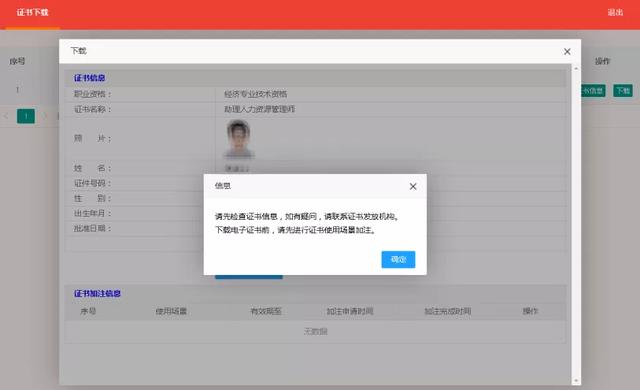各位朋友:
大家好,现在是“每天健康三分钟”的时间,我是安阳道简医院的医生郭振浩,今天给大家讲讲什么是支架。

1984年中国进行了第一例心脏支架介入手术,2000年中国心脏介入手术两万例,2011年数据激增至40.8万例。一提到心脏支架,患者通常就会冒出一大堆问题:支架寿命有多久?装完有啥后遗症?我还能活多久……今天就来和大家聊聊心脏支架那些事儿。
心脏支架是什么?

心脏支架是心脏介入手术中常用的医疗器械,一个空心、圆柱、网状的金属管,直径约2~4毫米,长几厘米,主要材料为不锈钢、镍钛合金或钴铬合金。作用是放在血管的堵塞处将血管撑开,保证血液的正常流通。
心脏支架的类型:

1. 传统支架,单纯的金属网状管。对人体来说,支架是异物,会出现血管内皮细胞增生和炎症反应,疏通后的血管再狭窄或堵塞的发生几率高达30%,所以这种支架逐渐退出市场。

2. 药物支架,在金属支架表面涂上一层抗癌药物。抗癌药物可以抑制血管内皮细胞增生,将血管再狭窄或堵塞的发生几率降至10%。现在的支架大部分是药物支架。
心脏支架的副作用:
心脏支架并非一劳永逸,只是一种救急手段,让患者暂时摆脱死亡的威胁。如果你认为放了支架就万事大吉了,那就大错特错了,心脏支架会带来很多无法预估的危害:
1. 血管更容易堵塞
支架对身体来说是一个硬邦邦的异物,放在血管里对血管内膜造成损伤,损伤的地方容易发生炎症反应,血小板在此处聚集,容易形成血栓、生长斑块,所以放支架的地方更容易堵了。
2. 长期服用抗凝药物,出血风险大大增加。
血管堵塞多数是由血栓造成,而血栓是血液凝固带来的后果。为了不让血管再次堵塞,就需要抑制血液的凝固功能,所以需要长期服用阿司匹林等抗凝药物。抗凝药物容易引起出血,包括消化道出血、鼻出血、结膜出血、尿血等。除了出血,还会造成肝炎、消化不良、头晕头痛等不良反应。
到底要不要放支架?
不是每个冠心病患者都适合使用心脏支架,真正需要介入治疗的病人约占20%。据专家所说,支架植入是目前治疗心血管狭窄引起供血不足的最有效手段,在通过冠状动脉造影术检查后,确定血管狭窄堵塞超过75%易发生心肌梗死或已经陈旧性心肌梗死,年龄在35岁至65岁的病人,才适合支架植入。
这类冠心病患者比起常年服药来说,更危险的是突发心肌梗死,如果血压、血糖、血脂不能很好地控制,血管狭窄一旦完全堵塞,是极有可能致命的。而支架植入术后确实需要按照医嘱长期服药,要定时复查血压、血脂、血糖。
做了心脏支架能活多久?
做完支架后具体能活多久,因人而异。有些人只活了几个月,有些人却活了几十年。所以,病不在治,在于防。放完心脏支架后,只是暂时摆脱了死亡的危险,接下来就是要积极预防,良好生活习惯的养成,坚持服用抗血小板药物和他汀类药物,定期随访。
最后祝大家生活愉快、身体健康,了解更多心血管科普知识,请关注我们,咱们下期见。
【英文版】What is a cardiac stent?
Dear friends, nice to meet you!Now it is time for “health talk for three minutes every day”,My name is Guo Zhenhao, a doctor of Anyang Daojian Hospital.Today I'm going to tell you what a cardiac stent is.
In 1984, the first case of cardiac stent intervention was carried out in China. In 2000, 20,000 cases of cardiac intervention were underwent in China.In 2011, the number of cases surged to 408,000. When it comes to cardiac stents, patients often have a lot of questions:how long does the stent last? What are the sequelae after loading? How long can I live?Let's talk about heart stents today.
What is a heart stent?
Cardiac stent is a common medical instrument in cardiac interventional surgery.It is a hollow, cylindrical and reticular metal tube, about 2-4 mm in diameter and several centimeters in length.The main material is stainless steel, nickel titanium alloy or cobalt chromium alloy. The main function of cardiac stent is to place it at the blockage of blood vessels and stretch them to ensure the normal circulation of blood.
Types of cardiac stents.
1. Traditional stent, that is pure metal mesh tube. For the human body, the stent is a foreign body, which will lead to vascular endothelial cell proliferation and inflammatory reaction. The probability of restenosis or blockage after dredging is as high as 30%, so this kind of stent is gradually withdrawn from the market.
2. Drug eluting stent, that is coating the metal stent with anticancer drugs.Anticancer drugs can inhibit the proliferation of vascular endothelial cells and reduce the incidence of restenosis or occlusion to 10%. Now most stents are drug stents.
Side effects of cardiac stents
Cardiac stent implantation is not once and for all, it is just an emergency means to let patients get rid of the threat of death temporarily.If you think that everything will be all right as long as you have a stent implantation, then you are very wrong.Cardiac stents will bring a lot of unpredictable harm.
1. Blood vessels are more likely to be blocked
Stent is a hard foreign body to the body. If it is placed in the blood vessel, it will cause damage to the intima of the blood vessel. The damaged place is prone to inflammatory reaction. Platelets gather here, which is easy to form thrombosis and plaque. Therefore, the place where stent is placed is more likely to be blocked.
2. Long term use of anticoagulant drugs greatly increases the risk of bleeding.
Blood vessel blockage is mostly caused by thrombosis, and thrombosis is the result of blood coagulation.In order not to block the blood vessels again, we need to inhibit the coagulation function of the blood, so we need to take aspirin and other anticoagulants for a long time. Anticoagulant drugs are easy to cause bleeding, including gastrointestinal bleeding, epistaxis, conjunctival bleeding, blood in urine and so on. In addition to bleeding, the use of anticoagulants can also cause hepatitis, dyspepsia, dizziness, headache and other adverse reactions.
Do you want a bracket?
Not every patient with coronary heart disease is suitable for the use of cardiac stents, and about 20% of patients really need interventional therapy.According to experts, stent implantation is the most effective method for the treatment of insufficient blood supply caused by cardiovascular stenosis at present. After coronary angiography, it is determined that patients with more than 75% of vascular stenosis blockage are prone to myocardial infarction or old myocardial infarction. Patients aged between 35 and 65 are suitable for stent implantation.
This kind of coronary heart disease patients will suffer from perennial drug abuse, but more dangerous is the possibility of sudden myocardial infarction, if blood pressure, blood glucose, blood lipids can not be well controlled, once the vascular stenosis is completely blocked, it is very likely to threaten the lives of patients. After stent implantation, it is necessary to take medicine for a long time according to the doctor's advice,and regularly review blood pressure, blood lipid and blood glucose.
How long is the life span after cardiac stent implantation?
How long can patients live after the stent is different from person to person. Some people live only a few months, while others live decades.Therefore, the disease lies not only in treatment, but also in prevention. After putting the stent, we just get rid of the risk of death temporarily. The next step is to actively prevent it. The development of good living habits, adherence to antiplatelet drugs and statins, regular follow-up and other measures may affect the life of patients.
Finally, I wish you all a happy life and good health!To learn more about cardiovascular science, please pay attention to us. See you next time.
,




